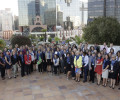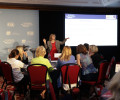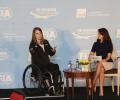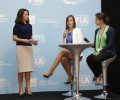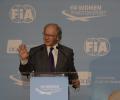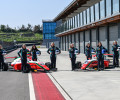FIA Women in Motorsport Seminar – The chart for the future
The final session of the 2016 FIA Women in Motorsport Seminar drew together the varied and insightful discussions of the last two days in Lisbon (7-8 October) to create a new road map for the future with eight recommendations
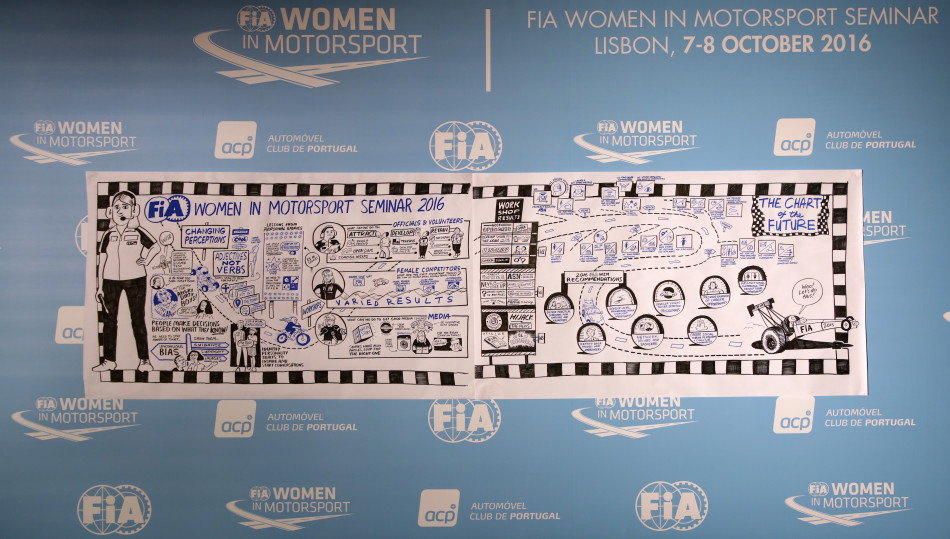
After a morning of interactive workshops, delegates from the 43 different countries assembled in Lisbon for the FIA Women in Motorsport Seminar gathered for the final Plenary session – ‘Drawing the chart for the future – Making the difference together’.
The aim of the session was to focus on the next chapter in the mission of the FIA Women in Motorsport Commission under its core principles to encourage, support and promote women in all aspects of the sport.
Moderators from the earlier workshops – which brought together discussions on Officials and Volunteers, Drivers and Media – each presented the results of their sessions before the delegates were invited to discuss best practices in their regions and present them to the floor.
Sue Sanders, a founding member of the FIA Women in Motorsport Commission, gave the eight Officials and Volunteers preliminary outcomes:
- Bringing friends and family to events
- Utilising open days
- Using role models and ambassador programmes
- Using training sessions, practical seminars and mentoring
- Showing clear career progression paths
- Social media
- Emphasising respect
- Appropriate clothing
“There was a lot of consistency among each of the five groups, and a lot of positivity that will hopefully help recommendations,” commented Sanders.
Presenting the outcomes from the second workshop – which addressed key challenges for female competitors – Jutta Kleinschmidt explained how using a point system to choose the most important recommendations ignited discussion, resulting in the following outcomes:
- Getting more girls interested in racing
- Stronger involvement from the ASNs creating sporting programmes
- Never giving up!
- More women in key positions
- Building up more self-confidence – female drivers must believe that they can do it
- Find more supporters and sponsors for female racing drivers
- Having more female role models
- Use of mental training
Kleinschmidt, the only woman ever to have won the Dakar Rally, said, “We have to think about how we can help, especially young girls to help them have the mental strength you need. After the seminar, we will compile all the pyramids of suggestions online and share them around with our colleagues around the world.”
Workshop three, which looked at the crucial role of media, was presented by Rebecca Geller.
“Everyone who is in this room has achieved something really amazing to be where you are today,” she said. “There are some truly inspirational stories, and perhaps you don’t realise that everything you do is potentially very interesting to the media. You have to make sure you work together, supporting each other on social media and engaging with ASNs to do the same. Whether or not you’re winning, you’re still making news.”
The eight recommendations of this session were:
- Create messaging to promote what you are doing and inspire others
- Identify publicity opportunities in whatever you do
- Promote each other to validate the industry
- Create a community
- Develop, maintain and share media lists
- Capitalise on current news trends
- Utilise the networks available to you, such as the FIA
- Be spectacular
Also included were the eight recommendations from the day’s opening session with the WISE team:
- Build the pyramid
- Look at the wider world of manufacturing as well as specific roles in motor sport
- Develop a motor sport careers campaign
- Create cohesive strategy, not one-off campaigns
- Look at all aspects of promotion, including media, marketing and recruitment
- Use ‘people like me’ resources as a way to engage schools
- Use experts to develop better communication skills
- Keep women engaged with motor sport
With the presentations complete, each geographical region prioritised its two most important points in each of the categories.
Interestingly, a number of the different regions from around the globe tended to prioritise the same key points – for instance Africa, Americas, Asia-Pacific, Europe Central Zone and Europe Northern Zone and MENA all selected Training and Practical Seminars and Mentoring as one of their main choices.
This feedback was then taken by the FIA Women in Motorsport Commission representatives present and distilled into the final eight recommendations to be taken forward and implemented over the next four years. This proactive, of-the-moment decision making is essential to the Commission, as it seeks to constantly innovate and invoke real, practical change in the sport around the world.
FIA Women in Motorsport Commission Manager Frédérique Trouvé then took to the stage to present the chart for the future.
“The eight strong bases we set out in the first seminar remain, and they are necessary to build what we have learned here this weekend,” she said. “We need to make sure that the higher levels of management of the ASNs devote resources to this cause.”
“Thank you all for your work over the last two days, and as a result we are delighted to present the eight global recommendations which are the results of your own work. We hope you take them with you and use those which are most relevant to you to.”
In no particular order, the eight recommendations are:
- Each ASN should identify its training requirements and deliver practical seminars and mentoring programmes for volunteers and officials, both nationally and within the region
- Each ASN should identify role models and ambassadors that effectively promote the sport to its officials
- Each ASN should develop local programmes which highlight the opportunities available to women in motor sport
- Each ASN should develop programmes including young driver detection cells at local and national levels
- Each ASN should find creative solutions to network drivers and sponsors
- Each ASN should create an online social media platform and community (e.g. Twitter and WhatsApp groups) which ensures that the contribution made by women in the sport is recognised at all levels
- Each ASN should provide simple examples of motor sport career opportunities
- Each ASN should ensure their promotional and marketing materials are written using the right adjectives for equal opportunities
Finally, with the key next steps set out, Michèle Mouton, President of the FIA Women in Motorsport Commission, made the final address of the Plenary Session to convey the brand new recommendations to the gathered delegates.
“I hope you’ve enjoyed these two days, and have lots to go back to your countries and do,” said Mouton. “You are working for our future here. We have really drawn on the success of the first seminar, and it is excellent to have heard that many of our recommendations from 2012 have been implemented around the world. But now we must implement this new roadmap.”
“You now have all the key messages from the seminar, and we must keep hold of this momentum with communication, as we have a great foundation to work from.”

 Facebook
Facebook Twitter
Twitter